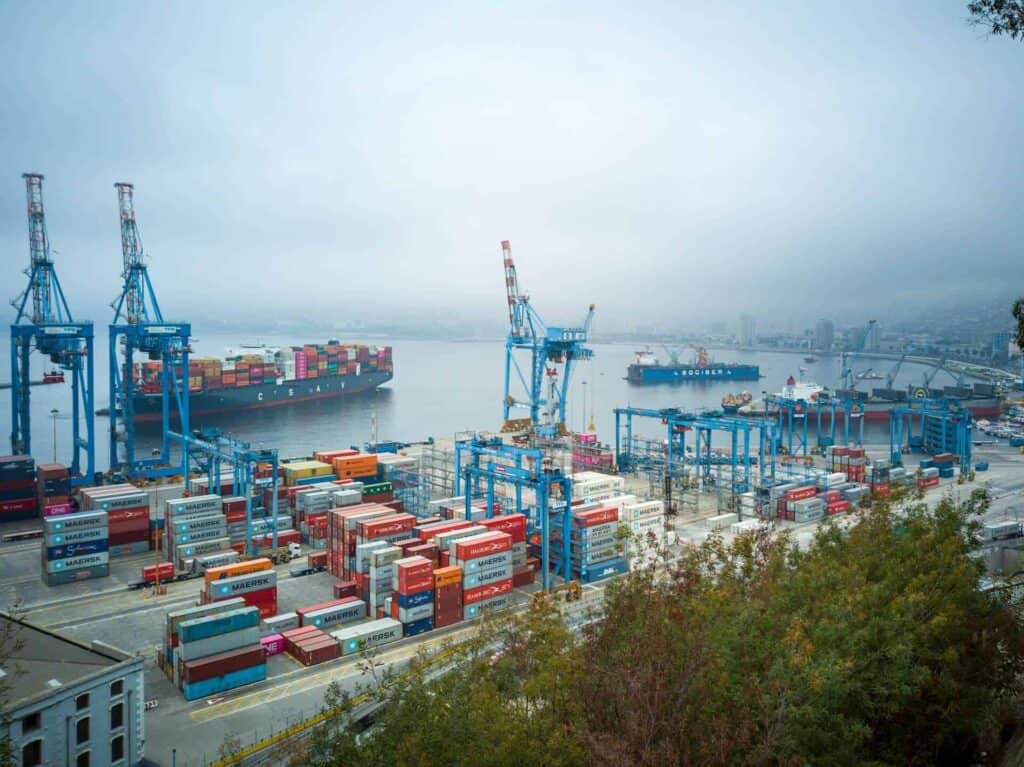地球の土地は有限な資源です。私たちの行動や慣習が及ぼす影響、そして未来の世代に土地をどのような状態で残していくかについては、歴史的にほとんど考慮されてきませんでした。しかし、今に至るまでそれは変わりません。世界的な製品需要の高まりを受け、製造業の勢いはすぐに衰える気配がありません。しかし、依然として世界最大の汚染源の一つであり続けています。製造業は、母なる地球を守るために、前向きな変化を推進し、変化をもたらす上で重要な役割を果たしています。リーダー自らが、事業活動における土地の活用方法を含め、こうした変化を主導し、事業の環境フットプリントを削減することができます。
製造業者への圧力はなくなるどころか、むしろ強まるばかりだ。欧州連合(EU)を含む各国政府は、次のような厳しい措置を導入している。 EU森林破壊防止規則(EUDR) 森林破壊に関連する製品を禁止する法律。EUDRと同様に、米国は「海外法の支配と環境上適正な貿易の促進(FOREST)法」を提案しており、これは「違法に森林破壊された土地で生産された特定の商品の市場へのアクセスを制限する」ものである。オーストラリアでは、2019年工業化学物質法が工業化学物質の導入と使用を規制し、製造業者が安全基準と環境基準を遵守することを確保している。
土地利用に関連する財務リスクは、地域によって規制の数と範囲が拡大するにつれて、増大し始めています。規制は今後も進化を続け、より厳格かつ包括的なものとなるため、リーダーは断固とした行動をとる必要があります。メーカーは、こうした規制や法律の変化から逃れることはできず、これらの課題に真正面から取り組まなければなりません。
良いニュースとしては、持続可能な土地利用政策やマイクロファクトリーのようなソリューションを採用することで、製造業者は過去の傾向を変え、プラスの影響を与え始めることができるということです。
現状:製造業における土地利用の現状
土地利用を最適化するリーダーには、環境フットプリントの削減、資源効率の向上、そして顧客に対して真摯に環境への配慮を示すことなど、大きなメリットがあります。土地をより効果的に活用することで、メーカーは様々な規制を遵守し、コンプライアンスを維持し、リスクを管理し、持続可能性を重視する市場において長期的な成功を確実にすることができます。
スミソニアン協会の報告書によると、人類は地球の果てまで進出し、すべての大陸に居住し、地球上の陸地面積の少なくとも83%に影響を与えています。製造業者は、責任ある土地利用を確保するだけでなく、事業活動が土地を含む環境に及ぼす長期的な悪影響を軽減するための先見性も持たなければなりません。
世界経済フォーラム(WEF)は、「過度な土地利用と土地利用転換は地球の健康を脅かしている」と述べ、地球の表面の4分の3がすでに大幅に改変されているとしている。
持続可能な慣行への初期投資は多額になるかもしれませんが、全体として、責任ある土地利用には、廃棄物の削減による長期的な費用対効果など、プラスの面があります。WEFはまた、企業が今日、土地、食料、海洋利用システムの持続可能な移行を受け入れれば、ほぼ年間価値$3.6兆 2030 年までに 1 億 9,100 万の雇用が創出されると予測されています。ただし、この価値を獲得するには、製造業者は事業計画を見直し、環境、社会、ガバナンス (ESG) の目標の範囲内で土地利用に対処する必要があります。
土地を保全し、その利用を最適化するための上位 5 つの戦略:
CEOは前例のない変化に苦闘していますが、これらの実践的な戦略を今後の事業運営に取り入れることで、土地への影響を軽減し、スマートマニュファクチャリングやグリーンテクノロジーなどの革新的なソリューションを通じてデジタルトランスフォーメーションを推進することができます。製造業における責任ある土地管理のための5つの先進的なアプローチをご紹介します。
1. 持続可能な調達
原材料は製造業者に必要ですが、私たちの土地からの持続可能な調達と責任ある土地管理により、原材料の抽出と加工に伴う炭素排出量を削減できます。
2. 土地利用計画
土地利用計画と製造業を組み合わせることで、共有リソースや再生可能エネルギーを採用した工場を設計し、効果的な廃棄物管理によって炭素排出量を削減するなど、環境への影響を軽減できます。
3. 炭素回収
健全な生態系は炭素を固定することができます。さらに、国際自然保護連合(IUCN)は、2030年までに地球温暖化を1.5℃未満に抑えるために求められる最も費用対効果の高い緩和策のうち、土壌の保護と修復が33%以上を占めると指摘しています。
4. マイクロファクトリー
消費者とサプライヤーの近くで事業を展開することで、 マイクロファクトリー 長距離輸送の必要性を減らすだけでなく、従来の施設よりも本質的に持続可能性が高く、設置面積が小さいため土地利用も抑えられます。これらのコンパクトでハイテクな工場は、製造業の未来を変革する可能性を秘めています。
5. 場所の選択
CEOは、環境への影響を最小限に抑える製造拠点を戦略的に選定する必要があります。土壌が清浄で、サプライヤーや市場に近い立地を選ぶことで、輸送時の排出量を削減し、汚染物質の流入リスクを軽減できるだけでなく、より持続可能で効率的な事業運営を実現できます。
持続可能な土地利用の実践 – ハイデルベルグマテリアルズのケーススタディ
ドイツのハイデルベルグ・マテリアルズは、事業目的で使用される土地の一時的な管理者としての責任を認識している建築資材企業です。責任ある管理者として、ハイデルベルグ・マテリアルズの責任ある土地利用方針には、責任ある土地利用へのコミットメント、影響の理解と報告、企業戦略への統合、生物多様性管理、土地の補償とオフセットなど、様々な取り組みが含まれています。また、あらゆる人権を尊重し、ステークホルダーとのエンゲージメントを推進することにも努めており、これらはすべてブランドレピュテーションの向上につながり、ひいては利益の増加につながります。
土地の消費者から自然保護主義者へ ― 土地の乱用をどう改善できるか
要約すると、製造業における破壊的変化は深刻です。これは主に、自動化、AIの統合、持続可能な活動といったイノベーションに加え、厳格な排出ガイドラインや廃棄物管理戦略といった規制の変化によってもたらされています。これらの業界の課題に対処するには、製造業のリーダーたちが迅速な思考と適応を迫られます。彼らは、破壊的変化が必要であり、今後も続くという事実を受け入れなければなりません。痛みを伴うとはいえ、製造業は持続可能な土地利用や土壌保護といったESGに配慮した取り組みを導入していく必要があります。この変化はESGの進展を促進するだけでなく、規制遵守や市場競争力に関連するリスクを軽減し、最終的には事業の維持にもつながります。
私たちの実践を通して 消費者サステナビリティ業界準備指数評価非効率性を明らかにし、持続可能な新たな道筋を計画します。お客様に合わせたCOSIRIロードマップには、具体的なマイルストーン、段階的なアクション、必要なリソース、目標目標が盛り込まれています。目に見えないものは分かりませんが、COSIRIは、企業が最も悪影響を与えている領域を明らかにし、リスク軽減のための優れた出発点を提供します。詳細については、お気軽にお問い合わせください。 認定COSIRI評価者 ESG の取り組みを加速させるために、今すぐご参加ください。
製造業における責任ある土地利用に関するよくある質問
製造業における責任ある土地利用とは何ですか?
製造業における責任ある土地利用には、環境への影響を最小限に抑え、地域社会を支援し、持続可能性と規制の目標に沿った方法で工業用地を計画、開発、管理することが含まれます。
責任ある土地利用は産業発展においてなぜ重要なのでしょうか?
責任ある土地利用は、天然資源の保護、汚染の削減、環境法の遵守の確保、製造業者の長期的な敷地の存続可能性の促進に役立つため、産業の発展において重要です。
製造業における持続可能な土地開発のベストプラクティスは何ですか?
ベストプラクティスには、環境への影響に基づいた敷地の選択、環境に優しい建築資材の使用、自然生態系の保護、エネルギー効率の高いインフラストラクチャの実装、循環型経済の原則を土地利用計画に統合することが含まれます。
製造業者は施設拡張時に土地への影響を最小限に抑えるにはどうすればよいでしょうか?
製造業者は、既存の工業用地を再利用し、コンパクトで効率的なレイアウトを設計し、緑地を保護し、土壌の破壊を減らし、環境に優しい建設技術を使用することで、土地への影響を最小限に抑えることができます。
責任ある土地利用は ESG コンプライアンスをどのようにサポートしますか?
責任ある土地利用は、環境への害(E)を軽減し、地域社会の福祉(S)に貢献し、土地開発の決定を透明かつ倫理的なガバナンス慣行(G)と一致させることにより、ESG コンプライアンスをサポートします。
製造業における不適切な土地利用計画による環境リスクとは?
土地利用計画の不備は、土壌汚染、水質汚染、生物多様性の喪失、そして二酸化炭素排出量の増加につながる可能性があります。これらのリスクは生態系に損害を与え、製造業者に法的および金銭的な罰則をもたらす可能性があります。
メーカーは土地計画においてグリーンインフラをどのように活用できるでしょうか?
製造業者は、雨水庭園、透水性舗装、緑の屋根、自然の緩衝帯、エネルギー効率の高い排水システムなどの緑のインフラストラクチャを使用して、環境への影響を軽減し、持続可能な土地利用を促進することができます。
責任ある土地利用において規制遵守はどのような役割を果たすのでしょうか?
規制遵守は、土地開発が環境法、ゾーニング規制、持続可能性基準に準拠していることを保証します。これにより、製造業者は罰金を回避し、より安全で責任ある土地利用慣行に貢献します。


